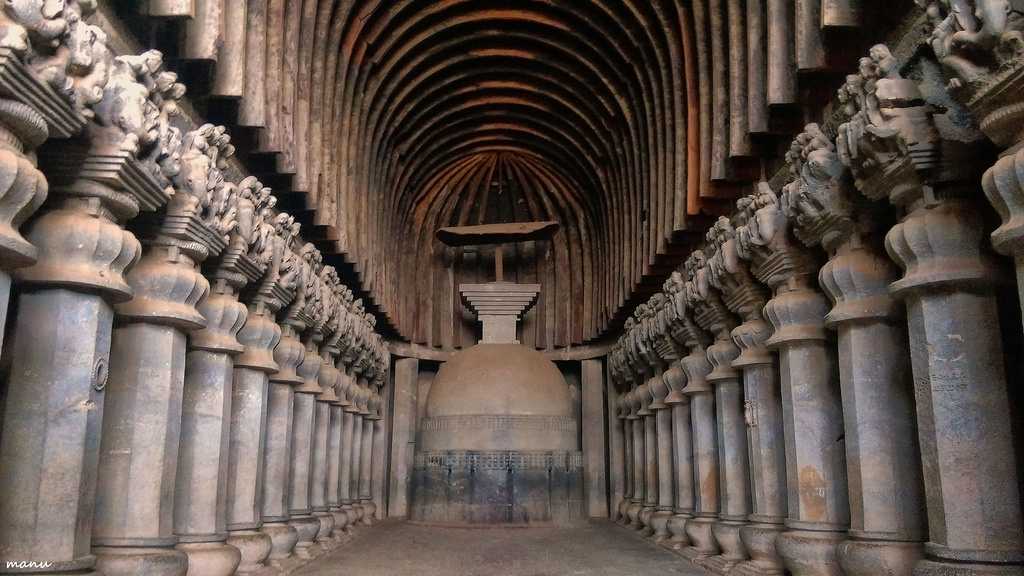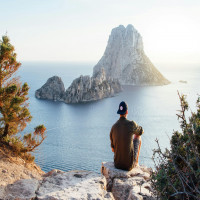Karla Caves: A Majestic Blend of History, Art, and Architecture in Lonavala

Strong 8k brings an ultra-HD IPTV experience to your living room and your pocket.
Situated amidst the lush green hills of the Western Ghats, the Karla Caves in Lonavala offer a mesmerizing glimpse into India's ancient Buddhist heritage. These rock-cut caves, dating back to around the 2nd century BCE, are not only a treasure trove of religious significance but also an architectural marvel. With intricate carvings, majestic statues, and serene surroundings, the Karla Caves are one of the most popular attractions in the region and a must-visit for history buffs, architecture enthusiasts, and spiritual seekers alike.
Karla Caves: A Journey into the Past
The Karla Caves are a complex of ancient Buddhist rock-cut temples located in Lonavala, Maharashtra, approximately 11 km from the bustling hill station. These caves are considered one of the finest examples of early Buddhist architecture and art in India. The Karla Caves Lonavala are believed to have been carved out during the reign of the Satavahana dynasty, between the 2nd century BCE and the 5th century CE.
The caves, consisting of 16 different rock-cut chambers, are spread over two levels. The upper level is more spacious and houses the main prayer hall, while the lower level contains smaller, more intricate chambers. The caves were once used by Buddhist monks as places of meditation, worship, and monastic living. They are also renowned for their historical importance, as they were once a thriving center for the spread of Buddhism.
The Karla Caves are particularly famous for their elaborate and well-preserved rock-cut architecture, which is a testament to the skill and craftsmanship of the artisans who worked on these caves. The intricate carvings, stupas, and sculptures inside the caves offer insight into the religious practices of the time, as well as the social and cultural life of the Buddhist community.
Karla Caves History: A Window to Ancient India
The history of Karla Caves is rich and intriguing. As mentioned earlier, the caves were primarily constructed during the period of the Satavahana Dynasty. The Satavahanas were instrumental in spreading Buddhism across the Deccan region, and the Karla Caves played an essential role in the propagation of Buddhist teachings.
The caves were primarily used by Buddhist monks for their daily rituals, prayers, and meditation. The central hall of the caves, known as the Chaitya, was a place of congregation where monks would gather to worship and recite Buddhist scriptures. The caves were also used for the storage of manuscripts and other religious texts, making them an important center of learning and spirituality.
What makes the Karla Caves historically significant is their architectural style, which reflects the transition from simple, unadorned cave structures to more complex and ornamented temples. The caves contain several inscriptions, some of which mention the names of monks and donors who contributed to the construction and decoration of the caves. These inscriptions provide valuable insight into the social and political landscape of ancient India.
One of the most famous features of the Karla Caves is the Chaitya Hall, which is one of the largest and most impressive in India. The hall is 45 feet long and 45 feet high, with a stunning vaulted roof supported by 34 massive pillars. The floor of the hall contains a stupa, which is a symbol of the Buddha's teachings and a focal point of worship for the Buddhist community.
Karla Caves Architecture and Sculptures
The Karla Caves are a masterpiece of rock-cut architecture. The caves are carved out of solid basalt rock, which was painstakingly shaped and sculpted by skilled craftsmen over several centuries. The entrance of the main cave features a grand façade with intricately carved arches, giving it a majestic appearance.
Inside the Karla Caves, visitors can marvel at the elaborate carvings and sculptures that adorn the walls and ceilings. The Chaitya Hall, in particular, is renowned for its finely carved pillars, which are adorned with motifs of animals, flowers, and celestial beings. The ceilings of the caves feature elaborate paintings and carvings that depict scenes from the life of the Buddha and various Jataka tales.
One of the most notable features of the caves is the stupa in the center of the Chaitya Hall. This stupa, which is surrounded by intricately carved pillars, is considered a symbol of the Buddha's teachings and serves as a focal point for meditation and prayer. The presence of such stupas is a hallmark of Buddhist cave temples, and the Karla Caves are one of the finest examples of this architectural style.
Karla Caves Steps: The Climb to Spirituality
Reaching the Karla Caves requires a bit of effort, but the journey is as rewarding as the destination. Visitors must ascend a flight of 350 steps to reach the entrance of the caves. The climb, though steep, is surrounded by lush greenery, and along the way, one can enjoy the natural beauty of the hills and the surrounding landscape. The steps are well-maintained, and there are handrails to assist visitors in their climb.
For many, the Karla Caves steps symbolize the effort required to reach spiritual enlightenment. The climb can be physically demanding, but it is a metaphor for the inner journey that one must undertake in the pursuit of knowledge and spiritual awakening. Once at the top, visitors are rewarded with a breathtaking view of the surrounding hills, the caves themselves, and the peaceful atmosphere that permeates the area.
Karla Caves Ticket and Entry Fees
Visiting the Karla Caves is an affordable experience, making it accessible to people from all walks of life. The entry fee for the Karla Caves is quite nominal, ensuring that everyone can explore this historical gem without breaking the bank.
As of the most recent information, the Karla Caves ticket prices are as follows:
Indians: ₹20
Foreign Tourists: ₹200
Children and senior citizens may be eligible for discounted tickets, though it’s advisable to check the current rates upon arrival, as prices may be subject to change. The fees contribute to the maintenance and preservation of the caves, ensuring that future generations can also experience the wonders of this ancient site.
Karla Caves Timings: When to Visit
The Karla Caves timings are designed to ensure that visitors can explore the caves during the daylight hours when the atmosphere is most serene and beautiful. The caves are open to the public every day of the week, and the usual timings are:
Opening Hours: 9:00 AM to 6:00 PM
It is advisable to visit the caves early in the morning to avoid crowds and to experience the tranquil ambiance before the midday heat sets in. The caves are also beautifully illuminated during the day, allowing visitors to appreciate the intricacies of the carvings and sculptures.
Best Time to Visit Karla Caves
The best time to visit the Karla Caves is during the cooler months of the year, from October to March. The weather during this period is pleasant, and the surrounding greenery adds to the charm of the site. Avoid visiting during the monsoon season, as the steps leading to the caves can become slippery and dangerous.
Conclusion
The Karla Caves in Lonavala are an exceptional example of India’s rich Buddhist heritage and architectural prowess. Whether you're fascinated by history, architecture, or simply seeking a peaceful retreat, these caves offer something for everyone. The Karla Caves history, stunning architecture, and beautiful surroundings make it one of the most important cultural sites in the region.
With its timings, entry fees, and relatively accessible location, the Karla Caves offer a rewarding experience for anyone visiting Lonavala. So, if you find yourself in the area, make sure to take the time to explore this ancient marvel and immerse yourself in the serenity and spirituality that the Karla Caves offer.
Note: IndiBlogHub features both user-submitted and editorial content. We do not verify third-party contributions. Read our Disclaimer and Privacy Policyfor details.


